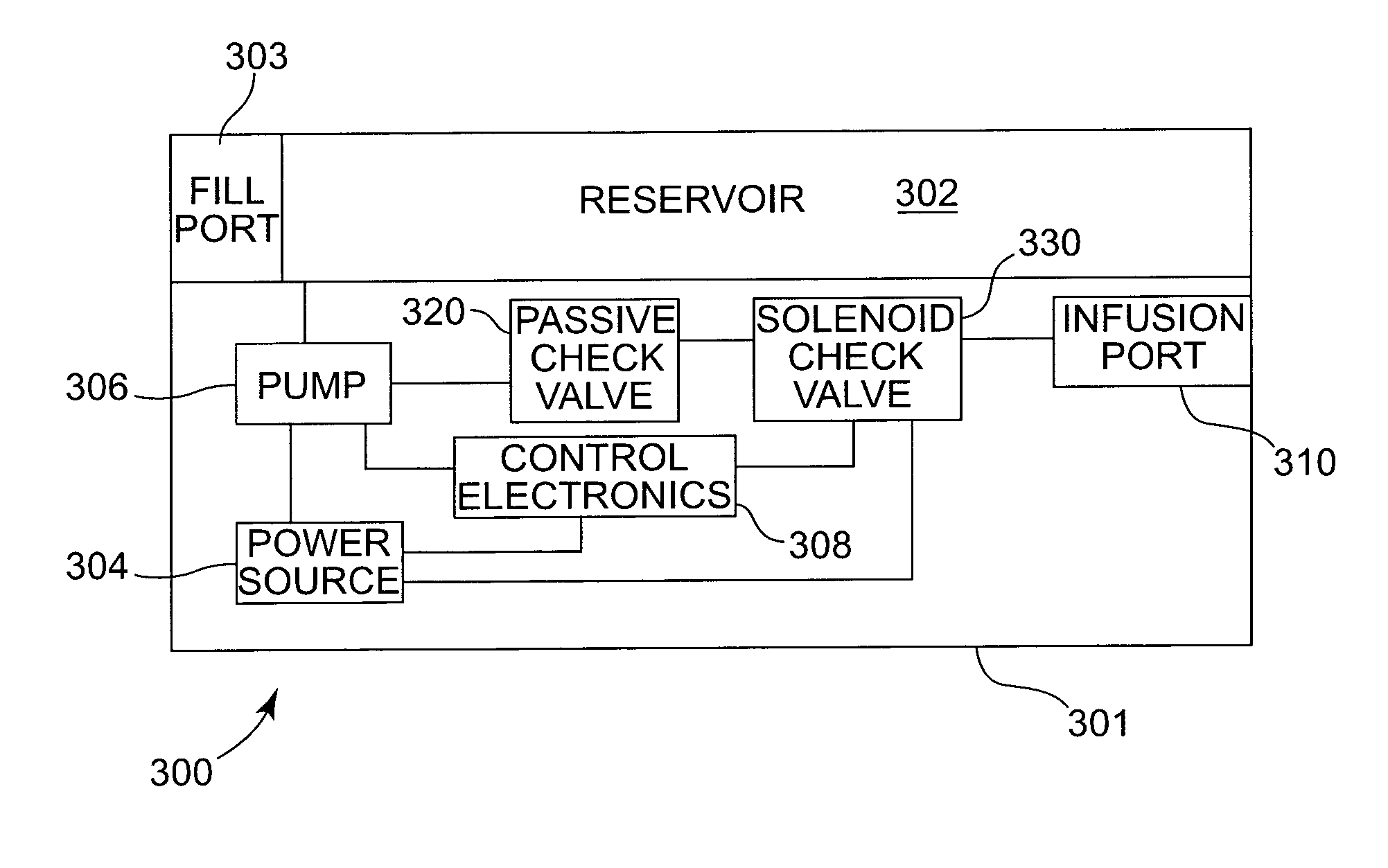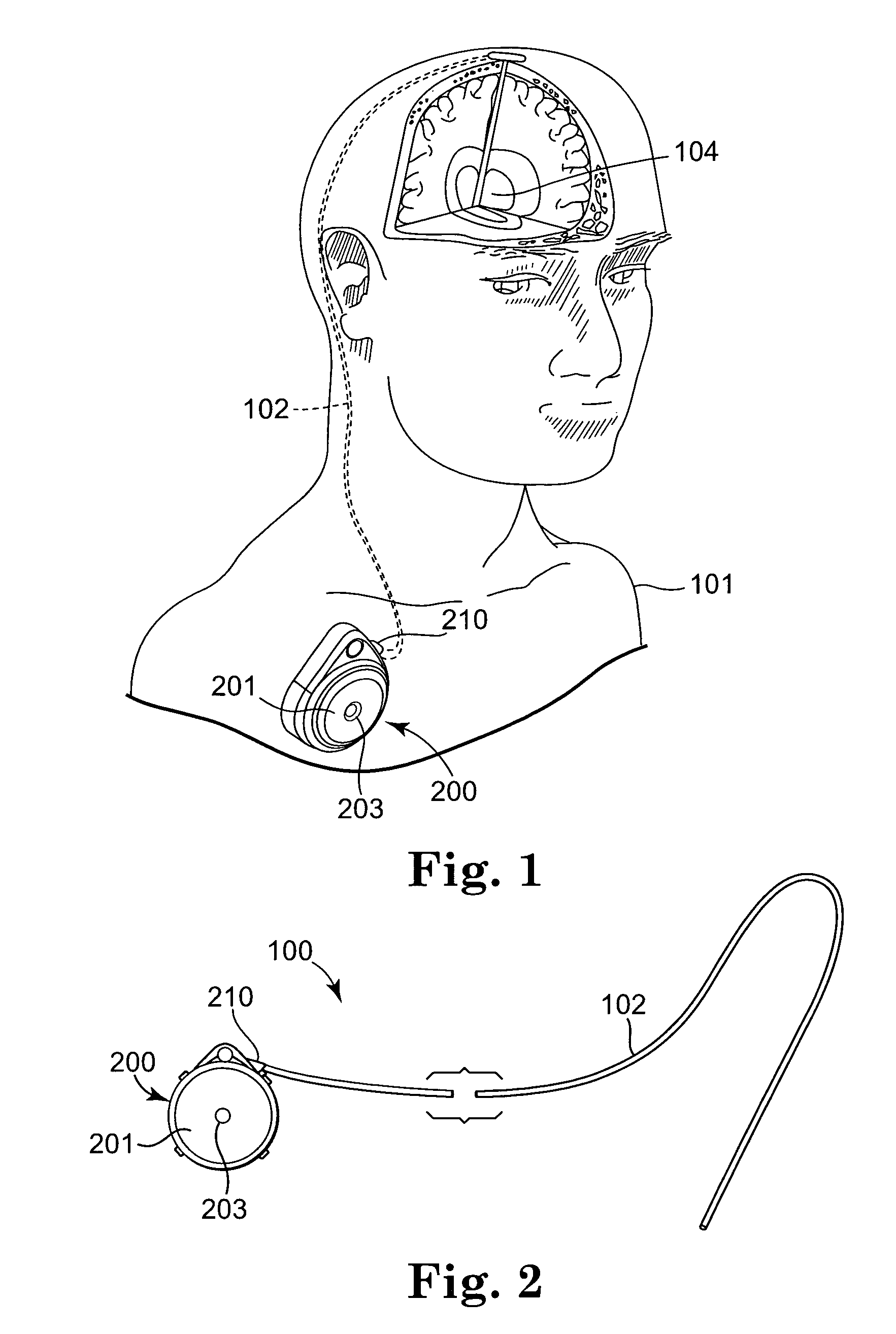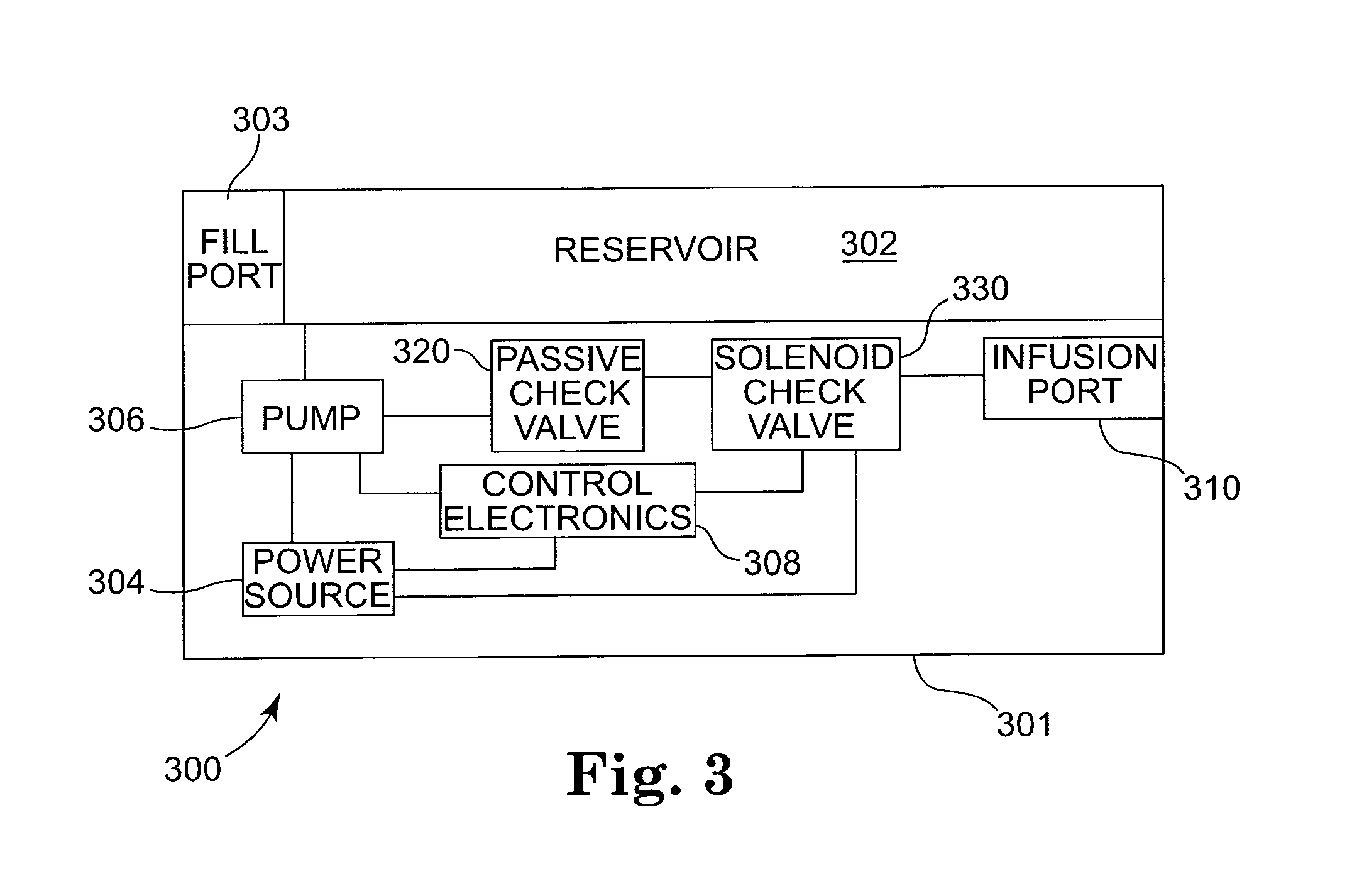Infusion device with active and passive check valves
a check valve and infusion device technology, applied in the field of medical devices, can solve the problems of affecting the precise delivery of substances, affecting the delivery of substances, etc., and achieve the effect of increasing the energy required
- Summary
- Abstract
- Description
- Claims
- Application Information
AI Technical Summary
Benefits of technology
Problems solved by technology
Method used
Image
Examples
Embodiment Construction
[0025]In the following detailed description of illustrative embodiments of the invention, reference is made to the accompanying figures of the drawing which form a part hereof, and in which are shown, by way of illustration, specific embodiments in which the invention may be practiced. It is to be understood that other embodiments may be utilized and structural changes may be made without departing from the scope of the present invention.
[0026]The present invention is directed to medical devices and, in particular, to infusion devices and systems that are implanted within a patient's body. Infusion devices in accordance with embodiments of the present invention typically incorporate a pair of check valves including a normally closed passive check valve and an active check valve provided in series downstream from a pump mechanism.
[0027]A “passive check valve” as used in connection with the present invention refers to a normally closed check valve that moves from its normally closed s...
PUM
 Login to View More
Login to View More Abstract
Description
Claims
Application Information
 Login to View More
Login to View More - R&D
- Intellectual Property
- Life Sciences
- Materials
- Tech Scout
- Unparalleled Data Quality
- Higher Quality Content
- 60% Fewer Hallucinations
Browse by: Latest US Patents, China's latest patents, Technical Efficacy Thesaurus, Application Domain, Technology Topic, Popular Technical Reports.
© 2025 PatSnap. All rights reserved.Legal|Privacy policy|Modern Slavery Act Transparency Statement|Sitemap|About US| Contact US: help@patsnap.com



